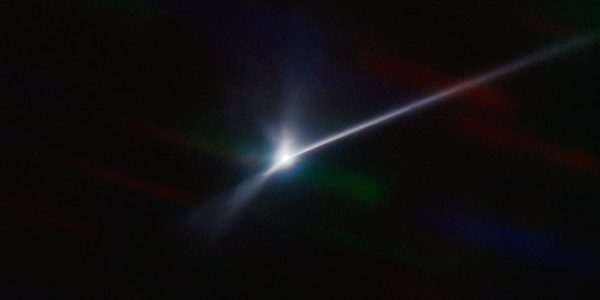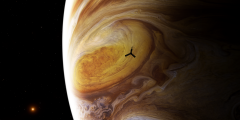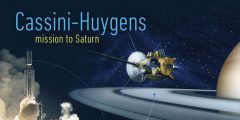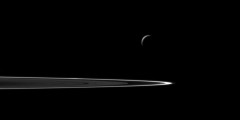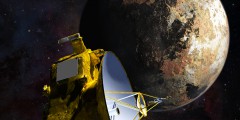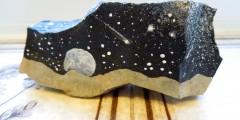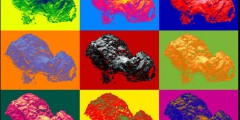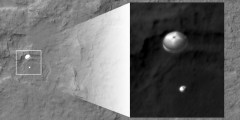Asteroids: Angst, amazement and avarice
October 14, 2022
On planet earth it is extremely difficult to change people’s, especially politicians’, behaviour to avert, say, climate catastrophe. Not so in space. Here humans boldly achieve the unthinkable, namely changing the motion of something that’s going in a dangerous direction. What I am talking about is, of course, NASA’s “first-ever mission dedicated to investigating and …
Jupiter’s Great Red Spot: Puzzles, pictures and participation
July 14, 2017
Creating new knowledge and reducing ignorance are two basic human needs. Science can help here, if we give it the freedom to do so and don’t chain it like Sisyphus to the rock of industrial production. Space missions are perhaps the prototype of humanity’s quest for knowledge, replacing more earth-bound adventures, expeditions and explorations, such as those undertaken by Alexander …
Juno, Jupiter and the art of citizen science
June 2, 2017
With political and moral life here on earth being in utter turmoil, images of/from Jupiter beamed down to our little planet by the Juno space probe have recently kept me sane (as far as that’s possible). They brought with them glimpses of beauty and moments of wistfulness. A year or so ago, I wrote a blog post …
Cassini: Space probes, history and women
April 29, 2017
I have just read a lovely article by Rebekah Higgitt on the various Cassinis that worked in France as astronomers. One of them was Giovanni Domenico (or Jean Dominique) Cassini (8 June 1625 – 14 September 1712), the first director of the observatory founded by Louis XIV, and discoverer, amongst other things, of four satellites of the planet …
Jupiter and Juno
July 3, 2016
Once in a while I write a blog post about space missions – and there have been quite a few recently. I especially enjoyed the Rosetta mission to 67P and the New Horizons mission to Pluto. Now another mission has crossed my horizons, namely the Juno mission to Jupiter. While Pluto was believed to be …
‘Serendipity carried through to perfection’ – thoughts on the Cassini mission
November 2, 2015
I am, as some of you might have noticed, an avid follower of …. not fashion but space exploration. I have ‘flown with’ Hubble, Voyager, Rosetta, Philae and New Horizons; I ‘follow’ Curiosity’s progress on Mars; and now I am entranced by some of the images that Cassini is sending back from Saturn and its …
Joining the dots: Pluto, Kant and the nature of scientific knowledge
July 8, 2015
In his Critique of Practical Reason (1788) Immanuel Kant wrote these most beautiful words: “Two things fill the mind with ever new and increasing admiration and reverence, the more often and steadily one reflects on them: the starry heavens above me and the moral law within me. I do not need to search for them …
Kissing a comet
November 12, 2014
I began writing this post this morning and I have just read that Philae has reached its landing spot Agilkia (sort of)! Touchdown happened at 1605 GMT. Congratulations!! Rocks, robots and us When I switched on the ESA live feed about the comet landing this morning, I heard one of the lead scientists say that landing …
Rosetta and the rubber duck: How we got to know a comet
August 7, 2014
I can’t really let Rosetta pass by without a little blog post… This was brought home to me when Alasdair Taylor tweeted on 2:21 PM – 6 Aug 2014: “Sexiest, crazy bonkers, rubber duck, chaotic town, Disneyland, big roller coaster, scary ride: all terms used to describe #Rosetta”. This made me curious about how people …
Seeing like the Mars Curiosity Rover
August 8, 2012
In my last blog I talked about metaphor as ‘the mind’s eyes’, as metaphors make us see something as something else, which enables us to think about something in novel ways, extend our knowledge and in the process shape both science and society. In this sense metaphor can be said to be a mental technology …

